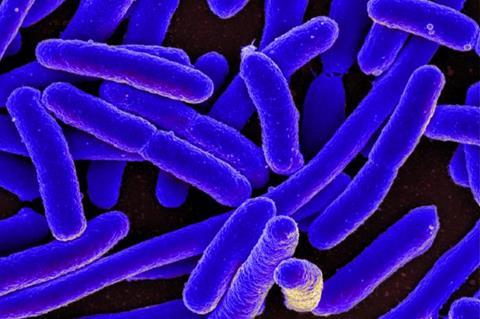Given the worldwide prevalence of drug-resistance bacteria, the research fraternity is on the lookout for alternative bactericidal treatment approaches. In a recent study, Japanese researchers have now compared bacteriophage-derived enzymes for combating drug-resistant bacteria.

Examination of T1-spanin revealed that it shows superior bactericidal activity against various strains, including E.coli. Furthermore, a novel phage-based technology effectively delivers T1-spanin genes into target bacteria. This breakthrough holds promise for the development of innovative antimicrobial agents in the future.
Global threat
In the recent past, global efforts have focused on tackling emergent and unprecedent health risks, such as those posed by the COVID-19 pandemic. Nonetheless, the continued prevalence of drug-resistant bacteria presents an even greater threat to global public health. For instance, in 2019 alone, drug-resistant bacteria were responsible for around 1.27 million annual deaths worldwide. Antibiotic-resistant strains now claim more lives annually, compared to HIV and malaria combined.
Now, while the menace of antibiotic-resistant bacteria continues to plague the healthcare system, alternative treatment approaches, such as bacteriophage therapy, have emerged as potential treatment options. Bacteriophages, also referred to as “phages,” are viruses that specifically target and destroy bacteria, including those that have acquired resistance to antibiotics. What makes some phages particularly effective is the presence of specialized enzymes, which they use in different ways to target and kill the bacteria.
Phage-derived lytic enzymes are one such type of enzyme, which can break down and kill bacteria from the inside out. Scientists have now learned to harness the power of these enzymes through bacteriophage therapy, offering a promising approach for targeting drug-resistant pathogens with high precision and efficacy.
Phage properties
To further explore and improve this approach of targeting antibiotic-resistance bacteria, a group of researchers from Japan, led by Satoshi Tsuneda and Kotaro Kiga conducted a study investigating T1 phage’s unique properties. It is renowned for its broad spectrum activity, involving the targeted action against bacterial strains, and the team aimed to understand its mechanism of action.
The findings of this study were published in the BioDesignResearch on 8 January, 2024, and shed light on T1 phage’s potential role in refining bacteriophage therapy for combating drug-resistant pathogens.
To achieve this, the researchers first compared enzymes derived from the T1 phage with those from the T7 phage. They analyzed endolysins, holins, and spanins to assess their ability to kill bacteria. Endolysins are known to degrade the bacterial cell wall from the inside, causing the cell to burst open, working alongside holins to regulate their activity.
“Holins work by puncturing the inner membrane of bacteria through oligomerization, with the help of a transmembrane domain. Spanins, on the other hand, act by mediating the fusion between the outer and inner membranes,” explained Prof. Tsuneda. Spanins also help break down the bacterial cell membrane. The researchers found that among the enzymes studied, those derived from the T1 phage were the most efficient at killing bacteria.
Stand-out organism
In particular, T1-spanin stood out. On attacking bacteria, viruses hijack the internal DNA machinery of bacteria, using it to make copies of themselves, similar to the mechanism observed in humans. Once enough copies have been made inside the bacterium, the cell bursts open, releasing the newly formed virus particles into the environment. Spanins, like T1-spanin, play an important role in this process, as they help break down the bacterial cell membrane, facilitating the release of the virus particles.
The T1-spanin enzyme displayed an exceptional capability to penetrate the outer defenses of nearly 120 different bacterial strains. Employing an innovative strategy, the researchers developed a novel approach to directly introduce the T1-spanin gene into target bacteria. This involved integrating the T1-spanin gene into a template virus shell. Explaining further, Prof. Tsuneda says: “Unlike natural bacteriophages, this synthetic virus is unable to reproduce itself, and by using the synthetic virus instead of the bacteriophage directly, we were able to reduce the risk of environmental contamination or any adverse effects.”
Wide range of bacteria
Owing to T1-spanin’s broad applicability, the method developed by the researchers in this study can be used to effectively target a wide range of bacteria, diverging from traditional approaches. While it may be difficult to imagine how something as small as a virus-derived enzyme can make a difference to the menace of antibiotic-resistant bacteria, this study shows us a ray of hope. It suggests how molecular-level innovative strategies can help address the most pressing challenges in global public health, illustrating the potential of novel strategies to combat drug-resistant pathogens and advance the development of therapeutic interventions.







No comments yet